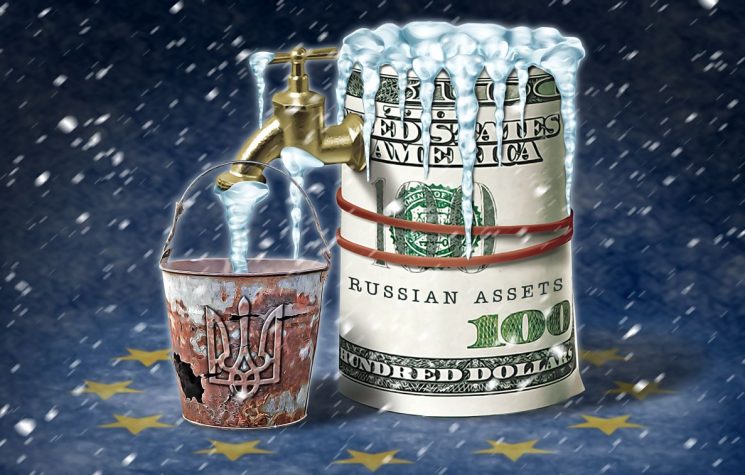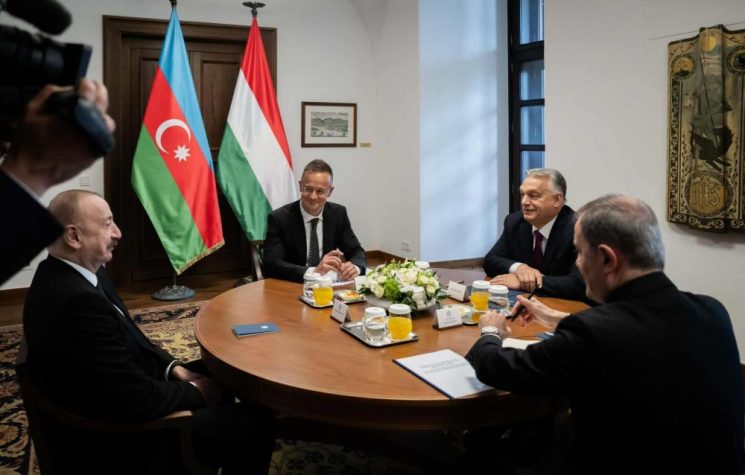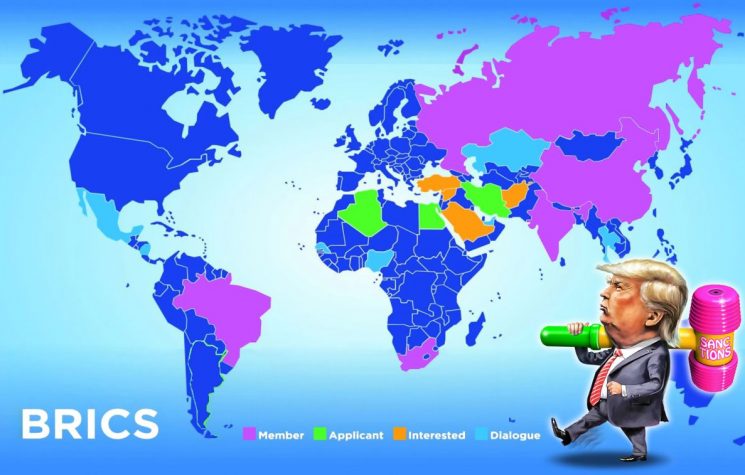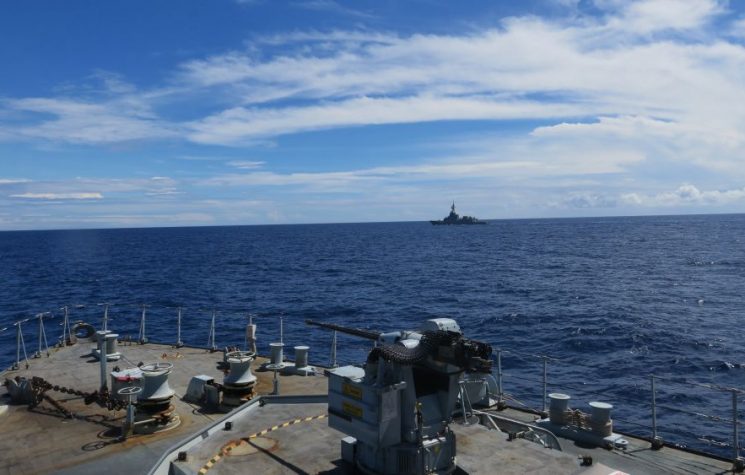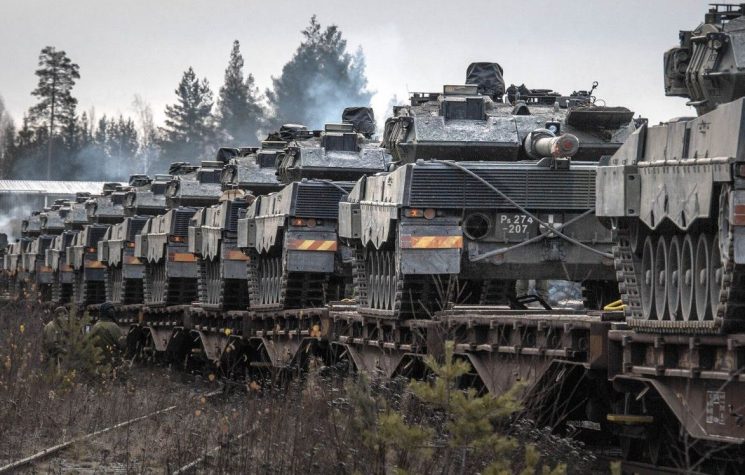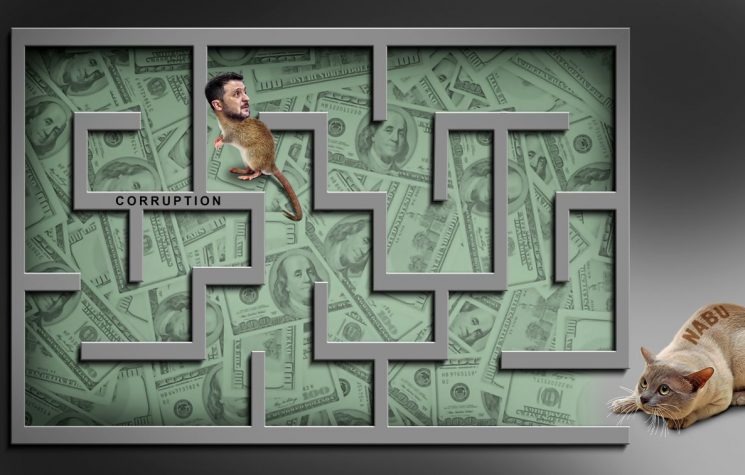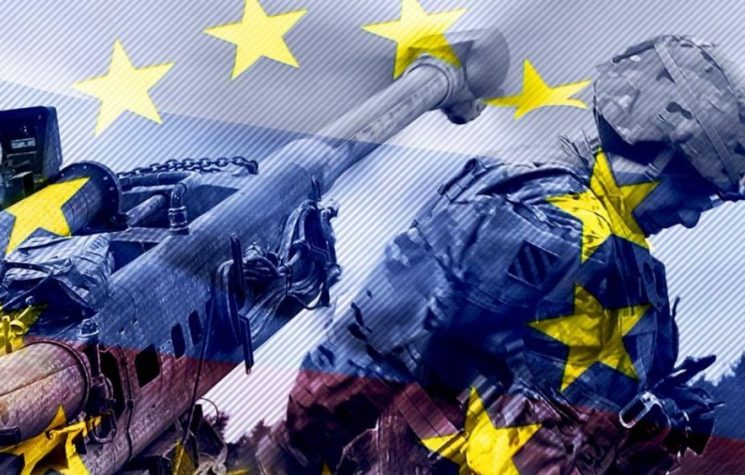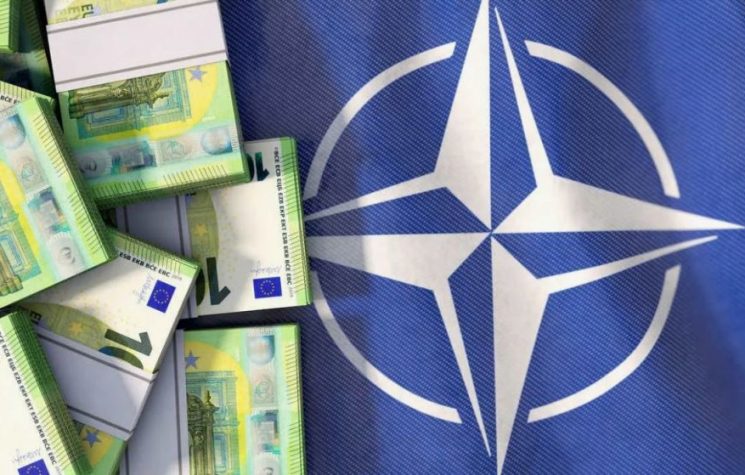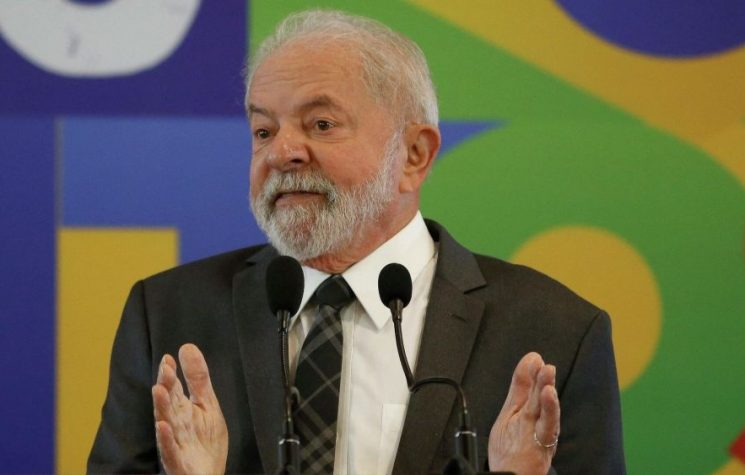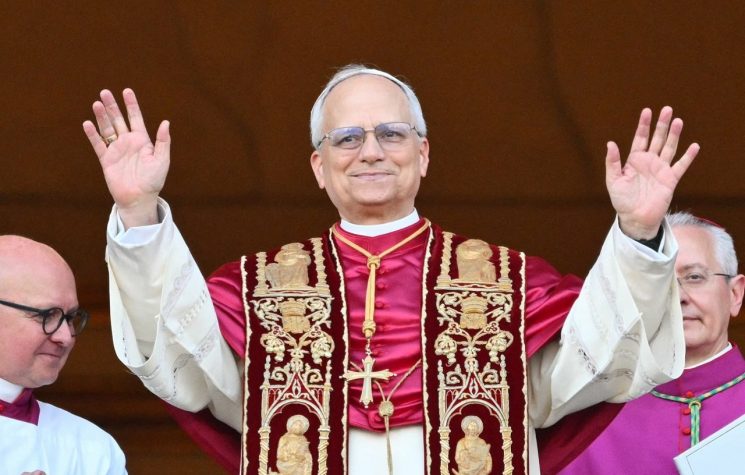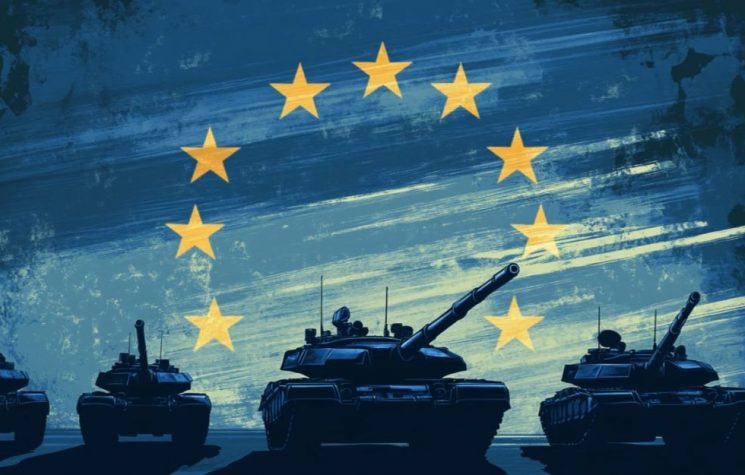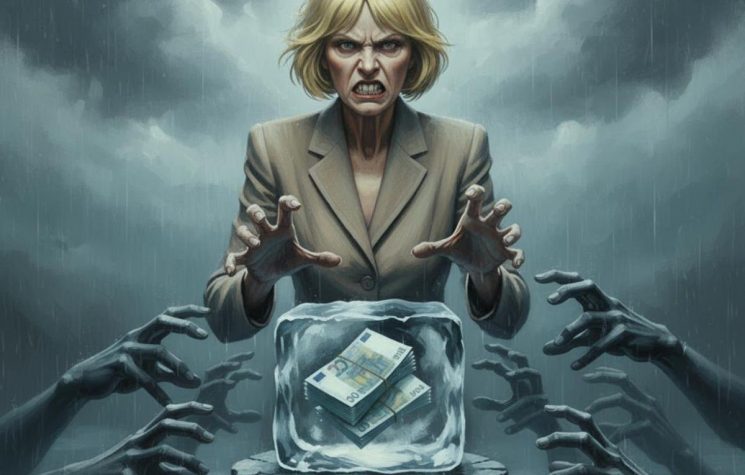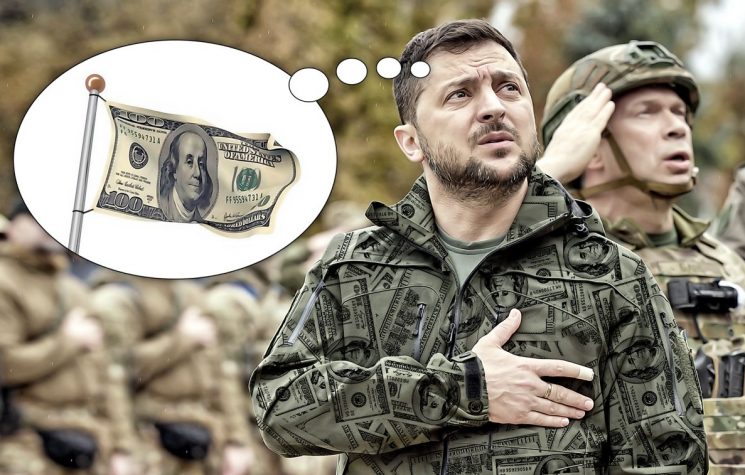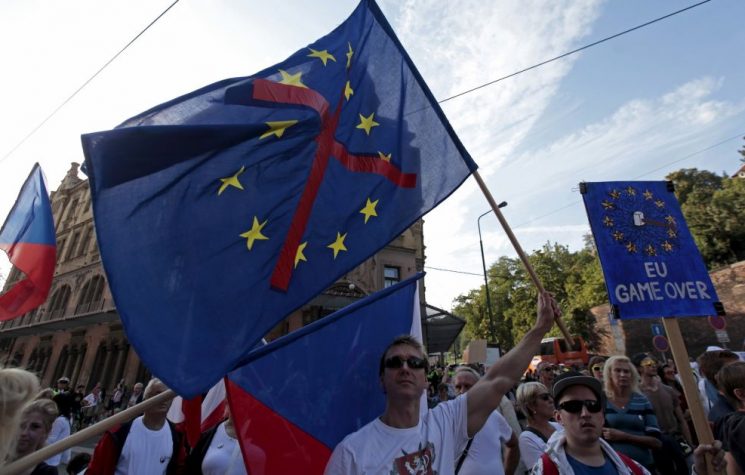Europe can postpone recognition of failure, but it cannot postpone the bill.
Join us on Telegram![]() , Twitter
, Twitter![]() , and VK
, and VK![]() .
.
Contact us: info@strategic-culture.su
Europe now faces a stark choice forced by its disastrous war policy against Russia: either allow the EU to successfully move toward a centralized state over the heads of its member states, risking a mass Eurexit that may or may not succeed in reaction to that gamble, or delay the larger crisis through member states quietly accepting one of several schemes that will cripple the economy and create social strife regardless. The Union must decide whether to use frozen Russian sovereign assets to finance a €140 billion “reparation” loan for Ukraine, or to issue joint debt through Eurobonds. Both paths carry severe legal risks and impose heavy costs on citizens: one through contingent liabilities, the other through immediate taxes, austerity, and political instability. Pushing through the Eurobond option would amount to a structural coup, a radical re-engineering of the EU against its current form. A recent Politico piece framed these in terms of Option A and B, which helps to contrast these two potential ways forward.
Commission President Ursula von der Leyen’s scheme from the European Commission reveals the depths of EU tyranny in its failed gambit to defeat Russia and guarantee investment outcomes in Ukraine. SAFE, (Security Action for Europe), a €150 billion defense loan program, was initially proposed in March by von der Leyen with the goal of stimulating rapid defense investment. By May, EU ministers had given their final approval to the program, without consulting the European Parliament, provoking a suit from the Parliament. Whether or not the Eurobond or Russian asset-seizure (theft) scheme is being proposed in light of (perhaps) likely-to-succeed challenges to the SAFE loan program, or if the Commission is trying to actually raise a total of nearly €300 billion, remains to be seen. What is certain is the push for SAFE comes chronologically after there was significant push-back from EU member states and ministers themselves on the feasibility of spending seized/frozen Russian assets (including interest on the moneys, for war against Russia, or anything else). And the Commission push for this Eurobond scheme comes after the EU Parliament presented a suit against SAFE.
What the Eurobond scheme and SAFE both have in common, nevertheless, is the mechanism for implementation, recklessly assuming authority to do so under a radically broadened interpretation of its powers re Article 122 TFEU.
The Commission is using threats to force member states to spend the frozen Russian assets. Refuse and each government faces a political crisis. Eurobonds are deeply unpopular because the mutualized debt falls on the population, leading to the overturning of governments at the ballot-box, and imposing them unilaterally would break EU treaties, leading to an emboldened Eurexit movement. Member states are being pushed to approve the use of unlawfully seized assets, completing the illegal expropriation through their own consent.
The stakes are far higher than money. This is a coup against the EU as it was conceived, a total re-envisioning of the Union itself. Ursula von der Leyen is not merely leveraging bonds to secure Ukraine funding. She is playing a game of chicken that risks the Union’s structure. If Parliament and the member states reject the Russian frozen-assets plan, they must accept the Eurobond alternative. Resist that too, and the Commission may impose it anyway. This is a structural showdown, a test of whether member states can be overridden by an executive treating the EU like a single country rather than a union of sovereign states. The conflict over not just the bond scheme, but over the future of the EU itself, centers on the application of Article 122 TFEU.
The potential alliance of Hungary, Czechia, and Slovakia illustrates how even a small bloc of Ukraine‑skeptic member states could greatly delay or effectively stop EU approval of any scheme, frozen assets or Eurobond alike. This possibility sharpens the Commission’s sense of urgency, forcing it to pressure other states into acquiescence before coordinated opposition can form, threatening to shatter EU treaty, and underscores the fragility of consensus under EU unanimity rules.
Option A: Frozen Russian assets – huge legal risk, long-term cost to citizens
Legally, tapping frozen Russian assets is precarious. The seized Russian assets may only be technically frozen within the EU’s own internal, though highly questionable, rationalization today, but once the EU spends them, they will be undeniably stolen. Any future Russian legal challenge will have sufficient strength in terms of returning them, whether or not they are spent. But the act of using these seized assets to fund a military campaign against the legal owner of the assets, Russia, will no doubt worsen the EU’s case.
In some way, these arguments will rest upon the legality of Russia’s SMO if Russia decides to challenge the EU’s asset seizure and expenditure using Russia’s assets for a war against Russia. Before launching its military operation in February 2022, Russia meticulously presented its security case to the United Nations on the grounds of Chapter 7, Article 51, PACE, and the OSCE, and the U.S., exhausting the available channels to mitigate conflict and warn Europe, leaving no procedural stone unturned. This greatly strengthens Russia’s case. Russia’s positive outcome in the conflict will go even farther, as this will become a political question in Europe. They will need Russian energy, even if it means changes in EU’s present sanctions posture. Politics will likely follow the economy, especially if the U.S. supports the EU in that.
Additionally, the Commission would be bypassing member-state approval and exceed its conferred competences and powers, raising issues under EU treaty law (Articles 311 TFEU and 5 TEU; see full discussion in Option B). At any rate, this would saddle European citizens with contingent costs and create a highly hazardous economic and political situation.
Moreover, sovereign assets normally enjoy immunity from seizure under international law and bilateral treaties, reflected in the United Nations Convention on Jurisdictional Immunities of States and Their Property (2004) and the 1989 Belgium–Russia bilateral investment treaty.
In UN Convention (2004), Art. 1, we find: “The present Convention applies to the immunity of a State and its property from the jurisdiction of the courts of another State.”And in the Belgium–Russia Treaty (1989), Art. 3(1), it is clear: “Investments made by investors of one Contracting Party in the territory of the other Contracting Party shall not be expropriated … unless … accompanied by provisions for the payment of compensation …”
Treating reserves as collateral or converting them into EU spending risks Russian claims of illegal expropriation. Belgium, where much of the stock sits (Euroclear custody), would face legal actions. Moscow could demand restitution plus interest via courts or arbitration, forcing costly payouts or settlements.
The Commission’s framing as “repay only if Russia pays reparations” is a legal game, pretending to satisfy Art. 3(1) by tying compensation to what is actually an unlikely military-diplomatic outcome. In practice, this is a permanent reallocation. Ridiculously, it requires Russia to concede defeat militarily, morally, and legally in a conflict where it holds the high-ground on all scores, just to retrieve the frozen funds. But here, the reparations required to pay to Ukraine would be much more than the sum of the seized assets then returned. Therefore, this is no way satisfies Art. 3(1) due to its absolutely unfeasibility. They may as well stipulate that the funds will be returned when ‘hell freezes over’.
The immediate fiscal hit to taxpayers may be low, but the hidden cost is a serious hazard: a court defeat or destabilized investor confidence would harm EU creditworthiness and impede capital inflows. Option A converts legal risk into a latent social cost: future taxpayers bear the burden, and threatens to destroy the entire EU project resulting from financial unworthiness.
Even conservatively, legal challenges, arbitration, and market fallout totaling €50 bn would reduce economic opportunities for workers; slowing growth, tightening credit, and limiting returns. If forced to return the full €140 bn plus interest to Russia, the liability dwarfs any per-capita calculation, making the reparation loan a catastrophic gamble.
Option B: Eurobonds – unconstitutional overreach and overt social burden
Unilateral Eurobonds generally collide with the EU’s treaty architecture: the Commission cannot force the issuing of mutualized debt; joint borrowing requires unanimous backing and national ratification.
To do otherwise requires violating the EU’s treaty itself. Brussels is signaling it might act first and fight legal challenges later. That’s the same pattern used in the COVID Recovery Fund, which stretched legal authority by framing the borrowing as temporary and “exceptional.” With the recovery fund in 2020, political pressure was used in the end to get member state support. The real subtext here is that the Commission is testing the limits of its authority, effectively threatening to act as if it were a sovereign state rather than an administrative body of a treaty-based union.
The COVID Recovery Fund (NextGenerationEU, €800 billion) was ultimately approved unanimously by all 27 member states. It was not formally imposed. But the way it was achieved is what makes the current situation so revealing. The Commission proposed the borrowing scheme in 2020, even though it had no explicit treaty authority to issue common debt.
It framed it as a one-time emergency measure, to achieve a legal workaround. The legal basis was Article 122 TFEU (“exceptional occurrences beyond member state control”), which was originally designed for things like natural disasters; “(1) severe difficulties in the supply of certain products, notably in the area of energy,” or; “(2) where a Member State is in difficulties or is seriously threatened with severe difficulties caused by natural disasters or exceptional occurrences beyond its control.”
War could arguably qualify as an “exceptional occurrence beyond a member state’s control”, but only if the war directly affects that member state. Ukraine is not a member of the EU. This raises the specter of the EU assuming an even more bellicose posture against Russia, more overtly behaving as a party to the conflict itself: in some way, they would need to articulate that openly for this to justify as an ‘exceptional occurrence’. The consequence of this on EU markets alone would be hard to predict, but also very unlikely to have a positive impact on the EU economy. This needs to be included as another social and economic cost.
Several “frugal” states (Germany, the Netherlands, Austria, Sweden, Denmark, Finland) objected fiercely at first to NextGenerationEU. But under extreme political and market pressure, they eventually agreed, and this was largely because they were told that failure to act would collapse the EU economy.
Even then, each national parliament had to ratify the “Own Resources Decision,” which temporarily expanded the EU’s borrowing capacity. That process took months, and there were legal challenges in Germany’s Constitutional Court, which nearly blocked it. So while it looked consensual on paper, in reality it was a coercive consensus: member states agreed under threat of economic collapse and political isolation. NextGenerationEU was a one-off precedent.
Using Article 122 again for Ukraine-related debt would likely exceed the permissible limits of the provision. A study requested by the AFCO committee, The Use of Article 122 TFEU (see below), delves into lengthy arguments as to why Article 122 can be used to construe broader authority, relevant to the broader question of the centralization of the EU into a ‘state’; exceeding Paris, Rome, even Lisbon, and present understanding of EU treaty.
Article 122 was the legal basis for COVID Eurobonds. It probably cannot be lawfully used for Ukraine funding, since Ukraine is not an EU member and the “emergency” is not one within EU territory, even if ‘war’ would be considered an emergency; it is Ukraine’s war and Europe officially declares itself a neutral party and not part of the conflict. If the Commission tried to rely on it again, it would almost certainly face legal challenges before the European Court of Justice (ECJ), and possibly constitutional challenges in Germany or the Netherlands.
Today the debate surrounds the application and meaning of Article 122 TFEU, which Brussels has been trying to convince itself gives them expanded powers not before really understood, (see ‘The Use of Article 122 TFEU’, September 2023). This much actually defines what the EU is or will become. Doing this for Ukraine’s war needs, but without clear treaty authority, would pose very large legal problems.
On August 20th, 2025 the European Parliament announced that it had taken the Council of the EU to court, after being excluded from discussions on the major SAFE defense loan scheme. The European Commission had earlier activated an emergency procedure to bypass Parliament in a push to strengthen Europe’s defense industry and encourage EU member states to increase military spending.
Repeating a NextGenerationEU type scheme without clear treaty authority would be ultra vires under Article 311 TFEU and Article 5 TEU.
Article 311 stipulates that the Union “shall provide itself with the means necessary to attain its objectives within the limits of its own resources,” prohibiting the creation of new revenue streams without unanimous member state consent. Article 5 TEU further limits EU institutions to exercising only those competences conferred upon them by the Treaties, expressly reserving all others to the Member States. A unilateral Eurobond issuance would thus amount to the Commission assuming fiscal sovereignty; a power the Treaties never grant and which, if asserted, would effectively suspend the member states’ budgetary control and violate constitutional order, creating a mass EU-wide legal crisis.
If forced, citizens face higher taxes, constrained public services, and renewed austerity. Debt obligations do not disappear with elections; social unrest could deepen inequality, provoke Euroscepticism, and trigger exit pressures. Constitutionally, this makes the Commission behave as a sovereign treasury without legitimacy.
€140 bn in debt spread across 200 million workers equals €700 per worker. At 3 % annual interest, servicing costs €21 bn/year, or €105 per worker annually over ten years. Principal plus €42 bn interest totals €182 bn, or €910 per worker. This translates into grandmothers skipping groceries, students delaying college, and curtailed public services. Trade unions, left-wing groups, and small-business forces could trigger a pan-European ‘Yellow Vests’-style crisis.
Conclusion: Evergreening, sunk costs, and Who pays
Both options are evergreening: keeping failing policies alive to avoid losses. Option A buries legal risk and hands latent liabilities to future citizens; Option B openly burdens taxpayers and risks constitutional rupture. And even worse, both scenarios ignore the chronic economic hazard to Europe if it continues its course of sanctions on Russian energy, which could make it the least competitive economy in the developed world.
In both options, the EU is pouring billions either directly into Ukraine or into arms to supply it yet the war is almost certainly lost and the billions spent on expected returns from reconstruction of Russian-liberated territories will never be recovered, turning these investments into sunk costs that serve only to prolong the illusion of economic coherence.
Europe suffers a paradigm problem and an existential crisis at the level of its ‘Eurocracy.’ Paradoxically, the policies that are politically hardest to enact at this bureaucratic level are also the most necessary and potentially fruitful. Since the EU proposes to embark upon a radical reconstruction of the Union itself, perhaps it is appropriate to presume something as radical, but in the direction of stability, growth, and peace: 1) reversing its war-footing; 2) rapprochement with Russia along the U.S.-Russia model; 3) restoring energy pipelines like Nord Stream 2; 4) recognizing Ukraine as Russia’s legitimate sphere of influence; 5) joint investment with Russia in the post-Warsaw Pact sphere; 6) building on the OSCE and 1975 Helsinki Final Act framework; 7) developing a joint Eurasian economic and security architecture. This ensures stability, development, and prosperity for generations.
For Europe, this requires overcoming chronic Russophobia and eschewing Atlanticist paranoia. Europe can postpone recognition of failure, but it cannot postpone the bill. Who will be left holding it, and will there even be an EU that can pull this off?
Follow Joaquin Flores on Telegram @NewResistance or on X/Twitter @XoaquinFlores










